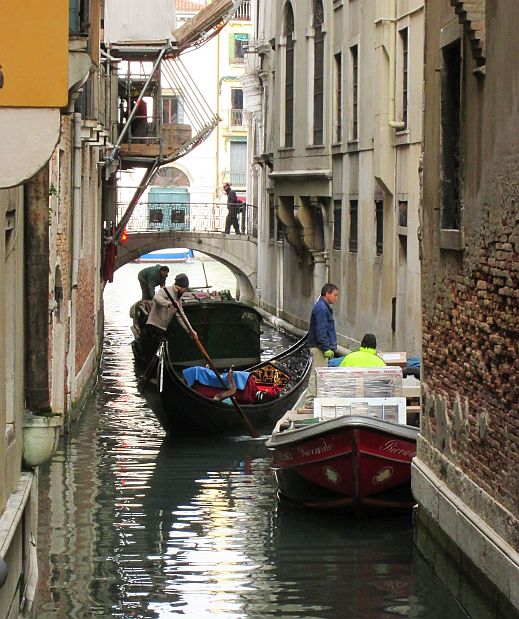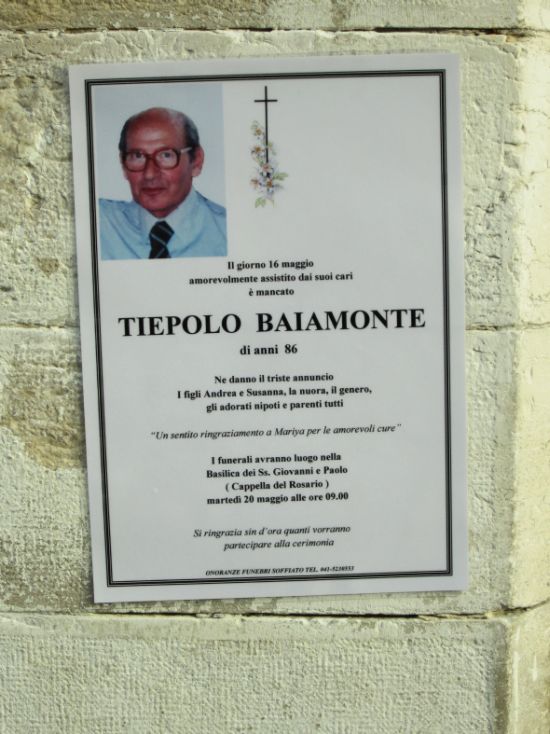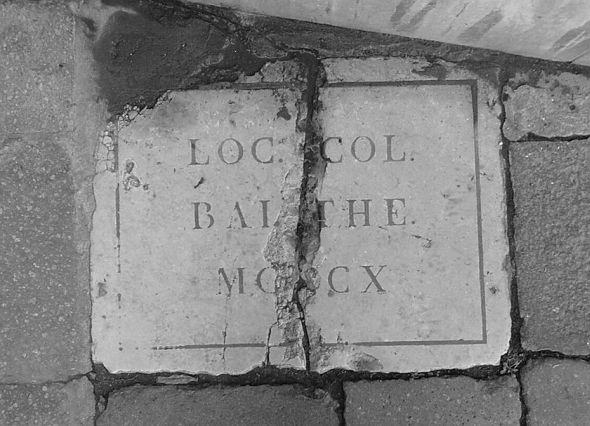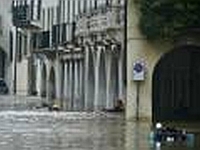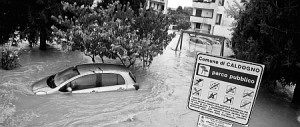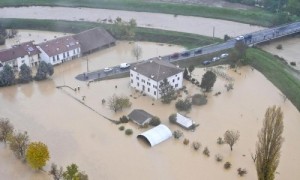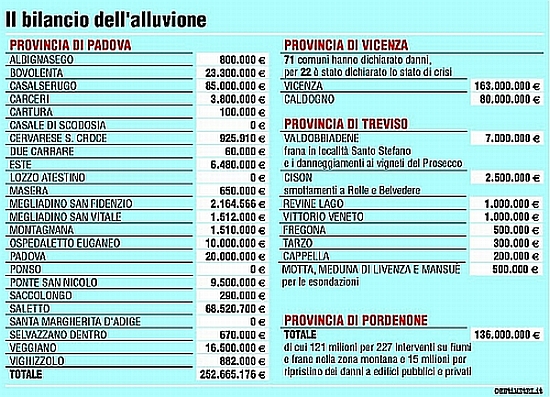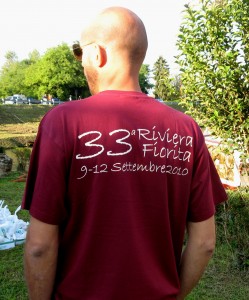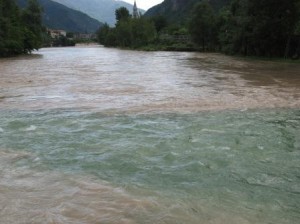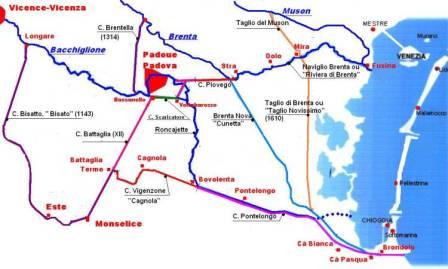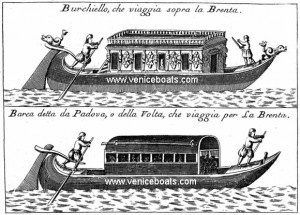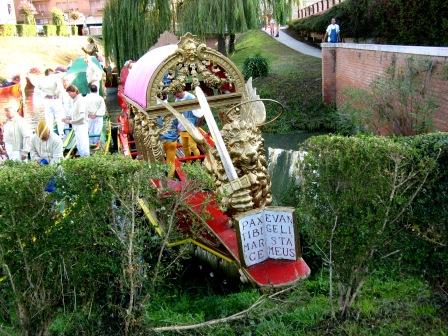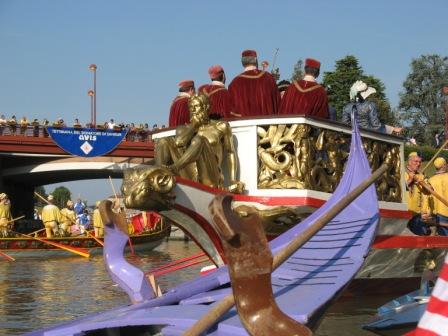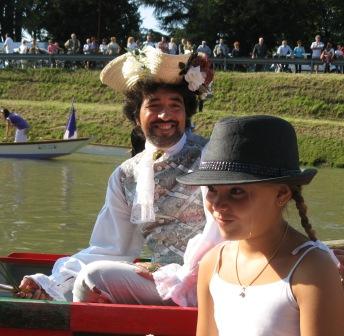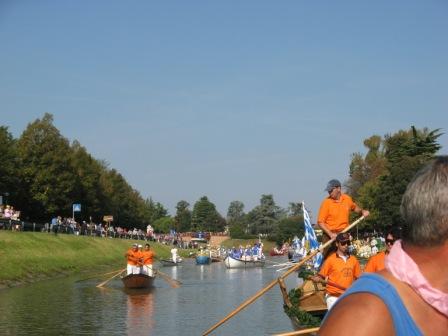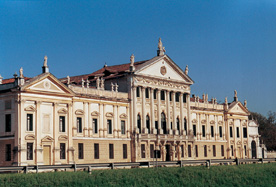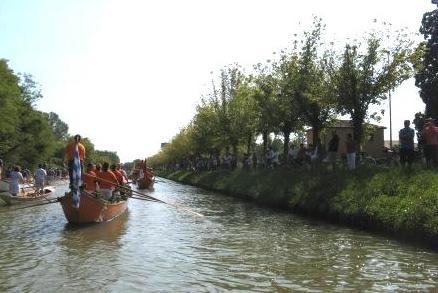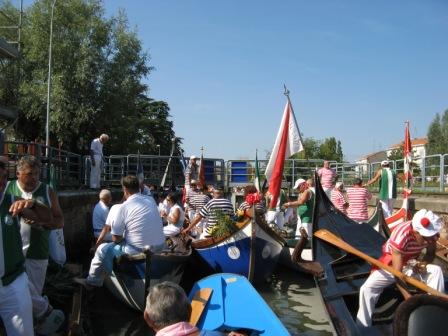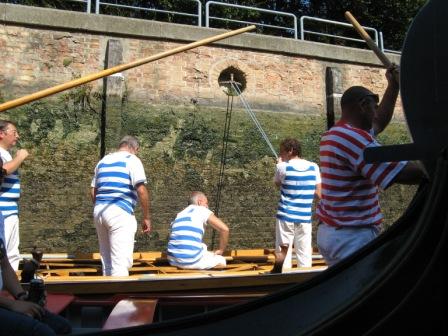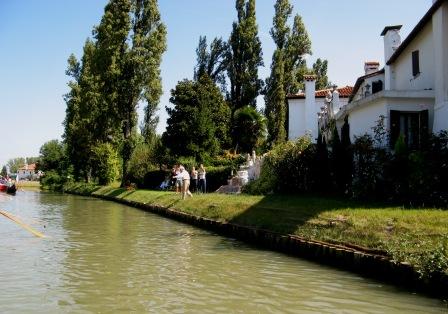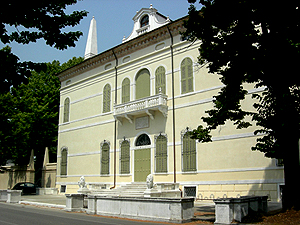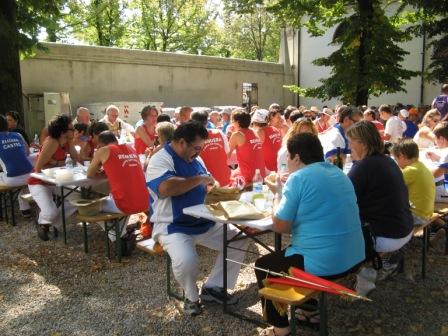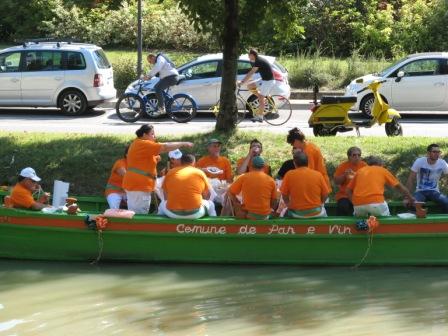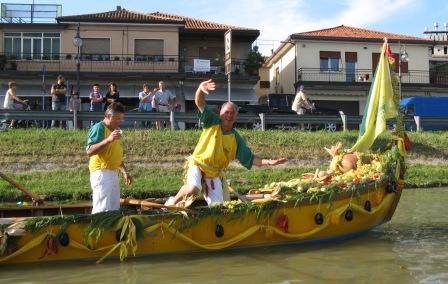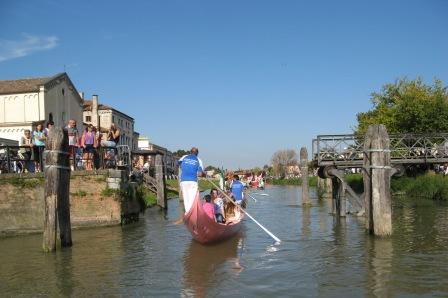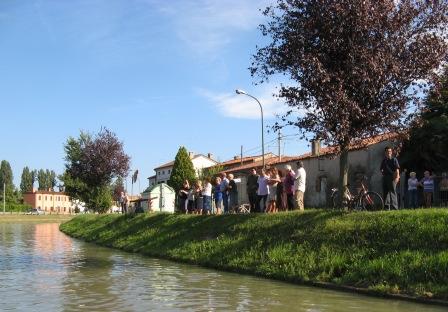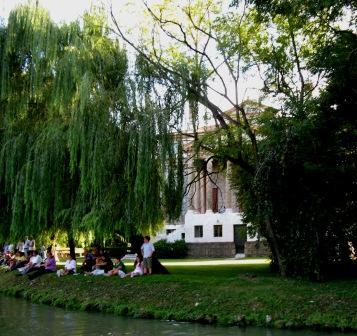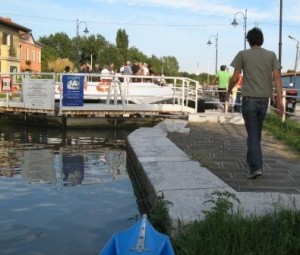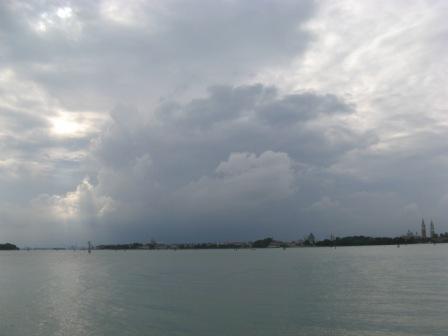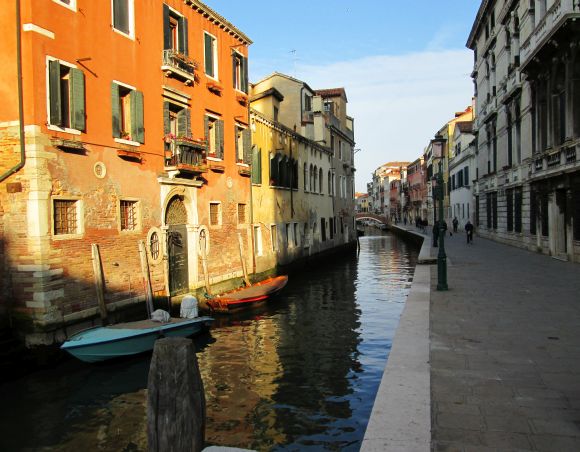
We are having perfect March weather (windy, chilly, sunny), which translates to perfect walking weather.
That’s a silly remark; it’s always walking weather here. But these mornings are much more appealing than some others. (August, I’m looking at you.)
So we are getting up and out the door early, when the streets are still almost empty and appear to be waiting just for us. Or if that’s a little too egotistical, they appear to be doing just fine without us. Or anybody. In any case, they look great.
Today we meandered as far as the Sacca San Girolamo, otherwise known as the “Baia del Re,” in remotest Cannaregio. And along the way, reminiscences sprang out. Lino doesn’t look for memories, they practically run into him.
Take, for example, the little, very old man who approached us as we sauntered along the fondamenta de la Misericordia. He was medium height, robust in a block-of-cement-like way, with a face that boasted three bright apples — his chin and both cheeks. His eyes were clear, if somewhat distant, and he was shuffling along very, very slowly.
He glanced at us both as we got nearer and somehow I had the impression that he recognized Lino. But no gesture was made, so we three continued on our way.
“You know who that was?” Lino asked me. I accept this rhetorical opener by now and resist making any sarcastical reply. I just wait.
“He was the coach of the national women’s volleyball team,” is the answer. Why would Lino know this?
“His job was driving the garbage barge in my old neighborhood,” so naturally they would have seen each other around.
“But he was also a kind of hoarder,” Lino continued. “I read in the Gazzettino that the neighbors finally complained about the smell, and the Public Health officers came to investigate and they made him move.” Like many trash-collectors, he not only nabbed good stuff that he could resell, but evidently also perishable items which, as we know, often get thrown away in medium-to-good condition. But then the organic matter began to go the way of all organic matter, hence the complaints.
“He moved to somewhere on the mainland,” was the conclusion. My next questions were fruitless. “I only know what was in the paper about that. It went on for months.”
But that remark wasn’t the conclusion. “I once offered him our family’s old Singer sewing machine.” It was an early foot-treadle model that his mother and sisters used to make all of his clothes for most of his childhood, “He gave me a 2-liter bottle of wine.” An excellent example of turning gold into straw.

We proceeded over the bridge and he pointed at one of the anonymous modern apartment buildings on the other side. In fact, he pointed to a particular door.
“Roberto used to go there for his piano lessons,” began the next chapter. I had met Roberto once; he was born blind, and we would encounter him strolling around Dorsoduro with his wife. In fact, I never saw him without her.
Robert was born at the corner of Lino’s courtyard and the main road near Campo San Barnaba, so they were always playing or hanging out together. (Roberto once told me that they would organize soccer games in their courtyard, and he was always the goalie. “They made the goal just a little bigger than I was,” he said. So cool.)
At least once a week, Roberto had to report for his piano lesson, and Lino and an undetermined number of friends would take him there, walking from Campo San Barnaba to the Baia del Re. “We’d wait outside while he did his scales, or whatever, and when he was finished we’d walk him home.”
“How long did that take?”
“Oh, I don’t know. An hour.” Tracing the route, I see they went about 2 km (1.3 miles) each way.
“His mother spent a fortune on him, with doctor’s visits and so many other things. His father unloaded flour at the Molino Stucky. He would stand by a chute, and the bag of flour would come down onto his shoulder and he’d load it onto the boat.” The bags of flour typically weighed 25 kilos (55 pounds). Does the term “herniated disc” come to mind? How about “chance fracture”?
“After a while, his mother sent him to an institute in Padova. These were common after the war, for children with various disabilities or injuries. Maybe they’d have picked up an unexploded mine. Or been kicked by a horse, or whatever.
“She thought it would be a good thing for him to have some time with his friends, so on Sunday my brother and I would take the train to Padova with her to visit him. We walked from the station all the way to the Prato della Valle.” That would be 2.6 km (1.5 miles) one way.
“There was still a lot of damage around, I remember, from the bombing. She’d buy us hot chocolate.”
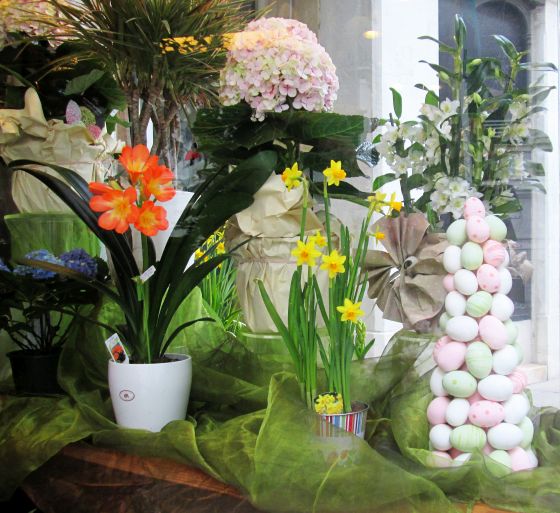
We walked under a large archway separating two streets, not far from the train station.
“See this archway?” he asked as we passed under it. You have to start a story with a question, it’s something Talmudic. Of course I said yes, and waited.
“One night during the war my father was walking home from the station” (his father drove a train with a coal-burning engine, so he was pretty much one color on his way home, the color being black. Not that that’s especially important to the story, I’m just setting the scene).
“It was late, and the curfew was on — nobody was supposed to be out — and he got stopped here by a group of patrolling Fascists.” One remembers that they were also known as the Voluntary Militia for National Security, and they too were wearing mostly black, but for a different reason.
“They asked him who he was, and where he was coming from, and where he was going, and why, and show them some identification now.
“He explained the situation, and after a few very tense minutes they let him go.”
I am not romanticizing the past, and neither is he. Washing in cold water and short pants winter and summer. No plumbing. No central heating. I’m not talking about the Middle Ages, there are plenty of people who remember how life was. But when I say it was a small town, I’ve said everything.
